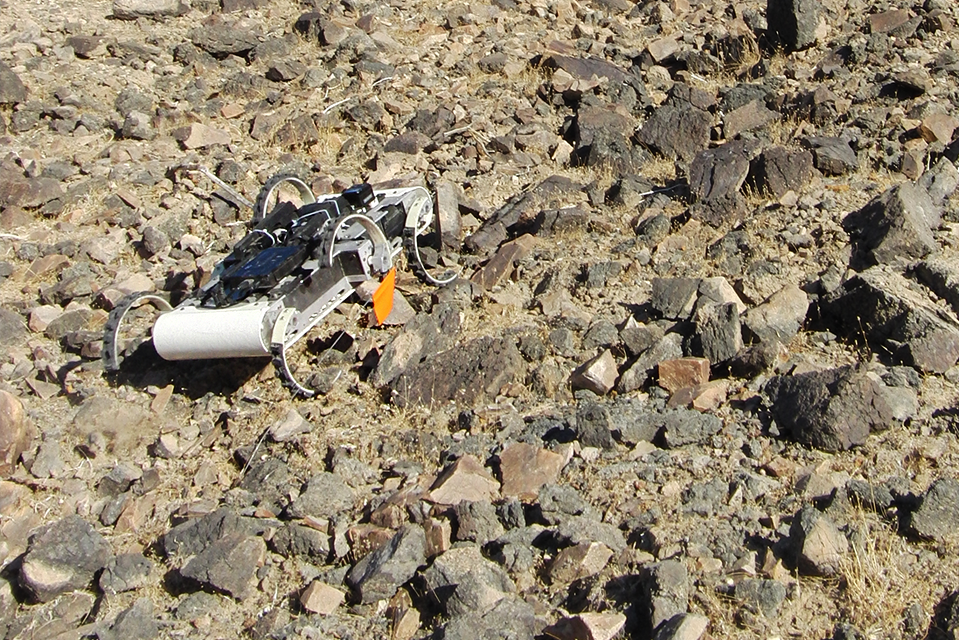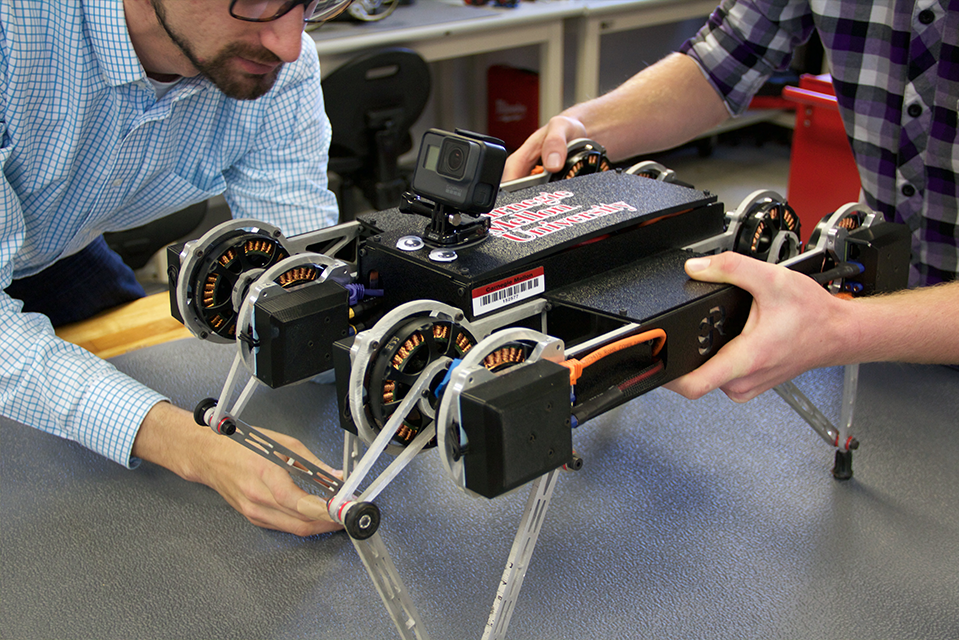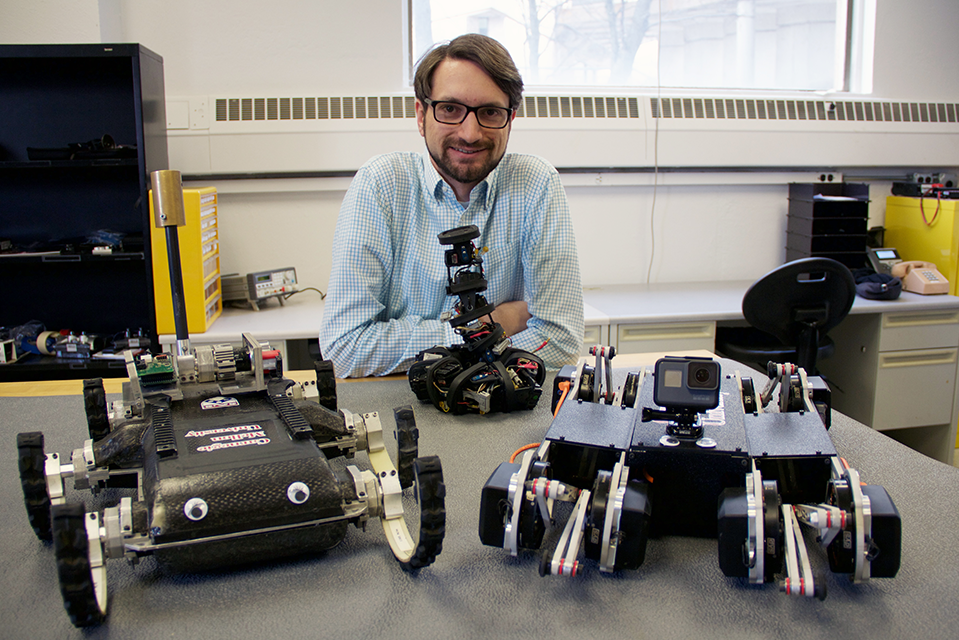Johnson wins ARO Young Investigator Award
Aaron Johnson has won the Army Research Office’s Young Investigator Award for his research on designing robots to cross rough terrain.
The desert is a tricky place for robots to navigate–just ask Aaron Johnson. The assistant professor of mechanical engineering recently won the Army Research Office’s Young Investigator Award for his work designing intelligent interaction between robots and their environments. Johnson’s experiences testing robots in the Mojave Desert cemented his interest in getting robots to overcome challenging terrain, and he started thinking about jumping and leaping behaviors. Johnson will apply these ideas to his newly funded project as he investigates ways to model uncertainty when faced with rocky hills.
Johnson’s research will be applicable to all types of challenging terrain, but this project will focus on getting robots to climb steep, rocky hills. According to Johnson, “what makes this challenging is the uncertainty that comes with the rough terrain,” so “it’s not necessarily the steepness of the slope but the unevenness and the fact that every step is going to be a little bit different.”
What makes this [project] challenging is the uncertainty that comes with the rough terrain.
Aaron Johnson, Assistant Professor , Mechanical Engineering
Despite continuing advancements with cameras and sensors, uncertainty plays a large role when trying to get a robot to climb a rocky hill. Even the best cameras cannot overcome certain perspective issues, such as seeing the top of a rock that the robot has to jump up onto. There are also uncertainties associated with predicting contact variables, such as friction and the actual shape of the terrain. The slightest error in calibration, execution, or when calculating contact can cause the robot to slip or fall because it lacks the necessary contact force.
Johnson’s project will also address robust robot behavior, which means that the robot can recover if it makes a mistake. A robot that is robust to changing conditions means a robot that is more successful in crossing challenging terrain. To design robust behavior, Johnson will work on developing robots’ feedback controls systems in conjunction with trying to model contact condition uncertainty.
For his project, Johnson will work with both wheeled and legged robots because robot morphology, or design, affects their applications. According to Johnson, “there’s only been a few places that I’ve seen a legged robot do something that a wheel really couldn’t do with all-wheel drive on,” but wheeled robots require much more skilled “drivers” than legged robots to cross rough terrain. Johnson suspects that research is moving toward a machine design that requires legs rather than wheels, but his overall project will help him compare each type of robots’ best performance and determine when each type of robot should be used.
The United States Army’s Young Investigator Award funds research proposals that address the nation’s security needs, and robots present a mostly untapped security source. Johnson’s main objective is to develop robots that can go anywhere in the world over any type of terrain, which would allow the Army to use robots in lieu of soldiers for certain tasks or operations.
Robots that can go anywhere in the world will also open up other applications such as environmental monitoring and exploration. As the Earth’s climate changes, robots that can reach remote areas would substantially help scientists predict these changes, as well as help them design countermeasures. Advancing robots’ ability to cross rough terrain will also result in robots that can better navigate other unstructured environments, such as cluttered homes and offices.



